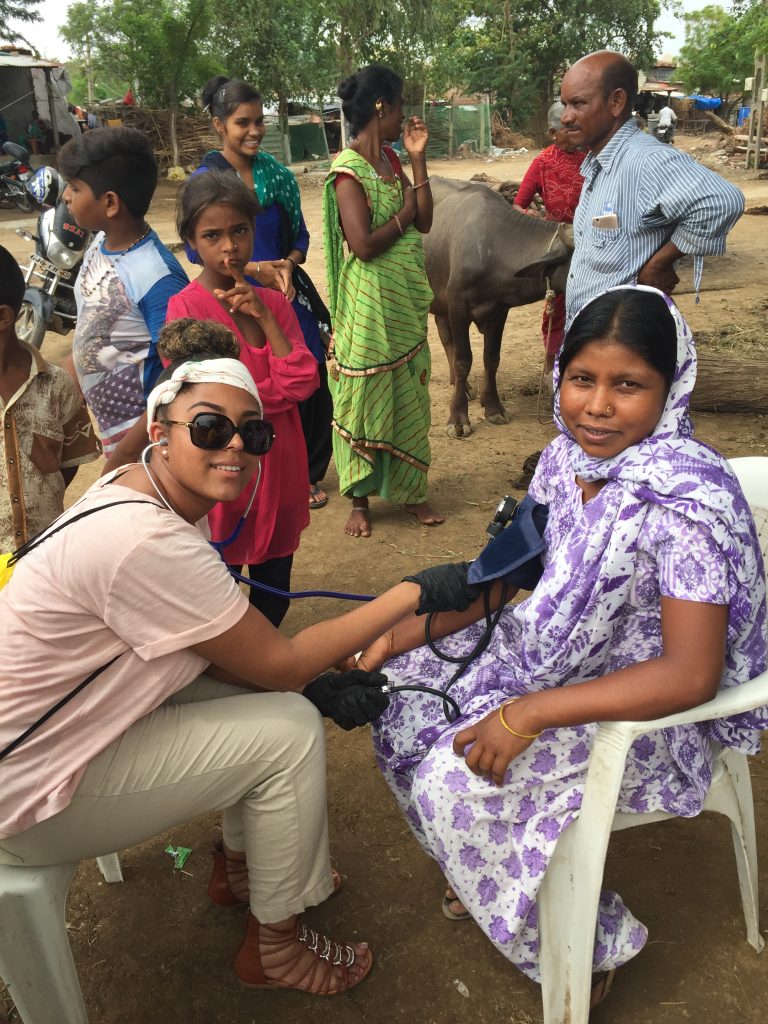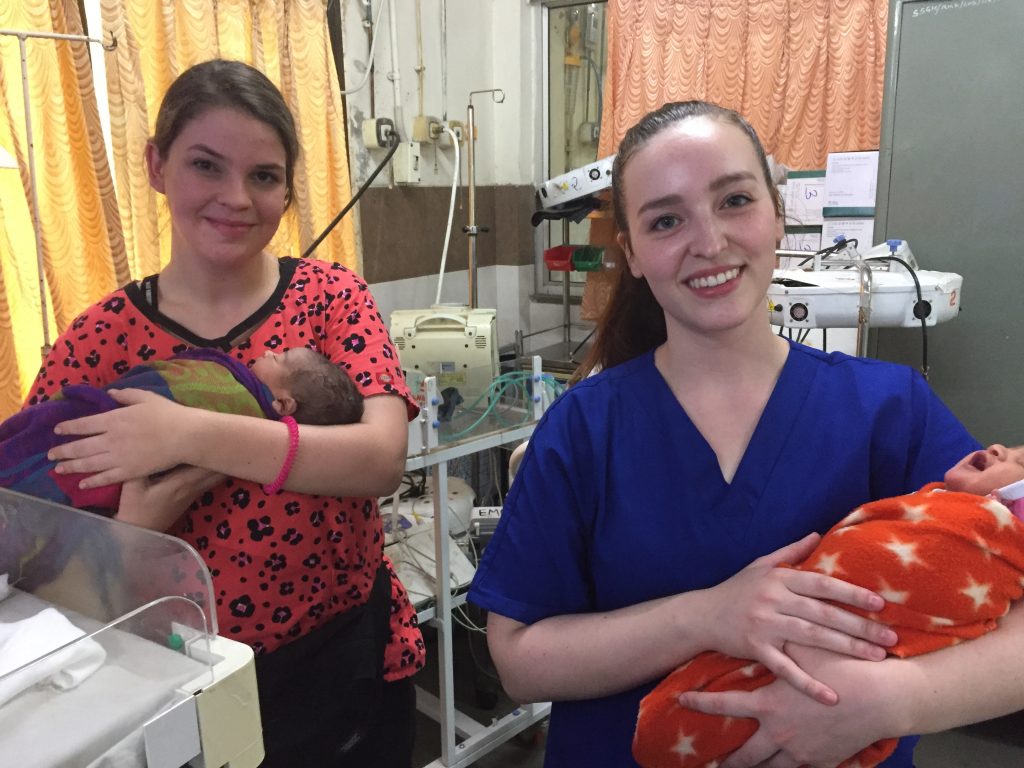Tracey Long (PhD, RN, MS, CDE, CNE, CCRN) is a registered nurse who has served on the nursing faculty at the College of Southern Nevada and at Nevada State College. She loves to take nursing students internationally to travel and serve with International Service Learning. She has lead teams to Belize, Peru, Colombia, the Dominican Republic and Haiti, Costa Rica, and now India!
“What is the disease causing the legs to be so twisted and disabled for so many people?” queried a nursing student looking at several people in a small Indian rural village.
“That’s polio,” stated Dr. Sawhney, the Country Coordinator for India for the 16 nurses and students, who got to serve as volunteers for this summer’s medical trip.
“No, it can’t be. Polio is eradicated!” quipped the student. Not in India.
Nurses and student nurses from Chamberlain College, Nevada State College, and the College of Southern Nevada came together to learn the spirit of namaste in India, in an international service-learning medical mission in summer 2018. In addition to offering volunteer medical services and learning about Ayurvedic medicine, Hindu religion and culture, the group learned “the namaste way.” “Namaste” is a respectful Hindu greeting used to mean both hello and goodbye, but more deeply means “the good in me, respects the good in you, and may our minds meet.” The team learned to truly respect people of a different culture.
Not only did the 16 nursing students learn about diseases such as polio, tuberculosis, and contagious skin diseases, but they even learned about leprosy from visiting a leprosy community. “I thought leprosy was a fatal disease in the Bible, and I didn’t realize it is a curable bacterial infection,” stated one student who was impressed by the self-reliant attitude of the 400 patients and families in the leprosy colony. Generally ostracized from society, leprosy patients can be easily cured with meticulous wound care and a series of antibiotics. Patients who become cured after antibacterial therapy learn how to perform dressing changes and help minister to the newer patients. The self-sustaining community raises cows, prepares community meals, harvests a garden, and even helps recovered patients learn how to work sewing machines and looms to create napkins, purses, tablecloths and handicrafts for sale. They also have their own school for 80 children of parents with leprosy. Leprosy is prevalent in the poorest areas of India. Also known as Hansen’s disease, leprosy is highest in India, Myanmar, and Nepal, which together have 70% of the world’s 200, 000 cases in 2015, according to the World Health Organization. Compared to 91 cases in the United States, the people of India are often diagnosed late and become disfigured, losing fingers, toes, and nasal cartilage.

Student Nurse Taking Blood Pressure
Students got to shadow nurses and doctors in a public hospital, work in rural villages doing blood pressure screening, and taught women about menstruation and hygiene during a two-week trip to three states in India. All nurses and students learned about Hindu and Muslim health beliefs and practices, which they stated will better help them care for patients in the United States.

Student Nurses in NICU
“The trip to India tested our limits as we delved into India’s culture. Seeing the people smile made the miles worth it,” shared Della Sandoval, a student nurse. “I was impressed by how the people of India handle their hardships. They don’t have a ‘poor me’ attitude; they simply do what they need to do to survive. We forget to be content with what we do have, instead of craving what we don’t,” pondered Allison Cidre, a student nurse.
Serving as a volunteer on an international medical mission gives nursing students and nurses the opportunity to understand community and global health in ways a textbook could never adequately illustrate. Students learned firsthand about water sanitation and consequences of tainted food and water. In addition, nurses and students learned about India’s colorful culture, rich history, and spicy vegetarian variations of legumes and vegetables we don’t even have in the United States.
Nurses and students participated in a study by Dr. Long, examining the influence of an international service-learning experience on their own self-confidence towards developing cultural competency skills. Through interviews and clinical self-reflective journals, all participants learned not only about the Indian culture, but about themselves, as they experienced personal growth through physical hardships, working as a team, pushing themselves to open up to strangers, and new ways of thinking with limited resources.
It may not take an international volunteer medical experience to better understand people of different cultures, but it definitely deeply touched these nurses to be more grateful, globally-minded, and better at using limited resources—because that’s the namaste way.
Banner photo: Team India, July 2018, at the Taj Mahal in Agra, India
